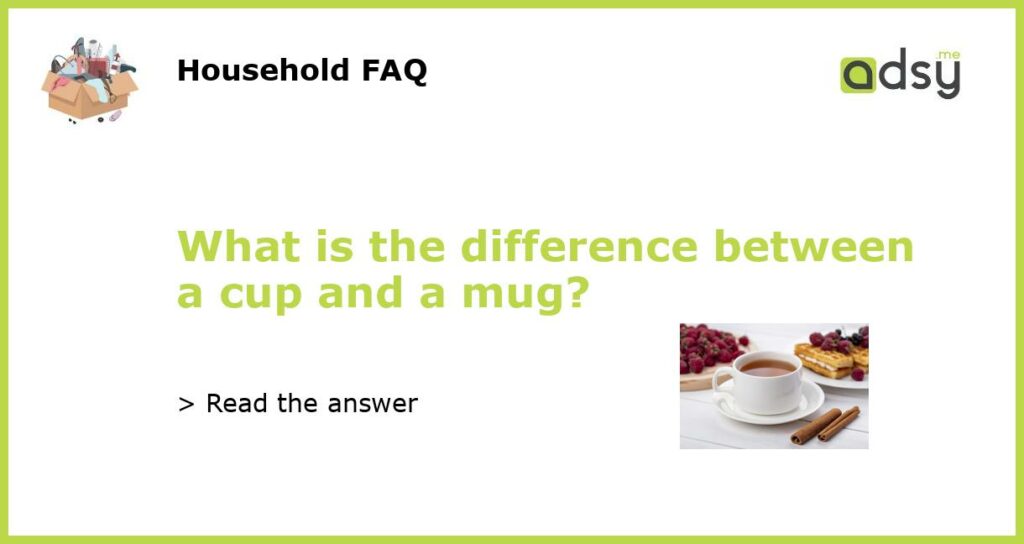Understanding the Definitions of a Cup and a Mug
When it comes to drinkware, the terms “cup” and “mug” are often used interchangeably, leading to confusion. However, there are distinct differences between the two. Understanding the definitions and characteristics of each can help clear up any misconceptions.
Cup vs. Mug: Size and Shape Matters
One of the primary differences between a cup and a mug lies in their size and shape. Generally, cups are smaller and shallower, with a capacity of 6 to 8 fluid ounces (180 to 240 milliliters), while mugs are larger and deeper, typically holding 8 to 12 fluid ounces (240 to 360 milliliters).
Additionally, cups often have a tapered, handleless design, allowing for comfortable sipping. Mugs, on the other hand, have a wider mouth and usually come with a sturdy handle, making them perfect for holding hot beverages like coffee or tea.
Material and Usage Distinctions
Another factor that sets cups apart from mugs is the material they are made from. Cups are commonly made of delicate materials such as porcelain or fine china, giving them an elegant appearance. Because of their fragility, they are usually reserved for special occasions or formal gatherings.
Mugs, on the other hand, are typically made of materials that can withstand higher temperatures and everyday use, such as ceramic, stoneware, or even durable materials like stainless steel or glass. This makes them a popular choice for daily coffee or tea drinkers.
Cultural and Design Considerations
The distinction between cups and mugs can also vary depending on cultural and design factors. In some regions, the terms may be used differently, and the specific characteristics of a cup or mug may differ from the traditional definitions.
For example, in Asian countries like Japan, teacups are smaller than typical cups and don’t have handles. They are often used for traditional tea ceremonies. In contrast, Western countries tend to have larger cups and mugs with handles for convenience.
Personal Preference and Versatility
Ultimately, the difference between a cup and a mug can also come down to personal preference and versatility. Some people may use the terms interchangeably, depending on the size and design they prefer for their beverages.
While cups are often associated with daintier, more formal settings, mugs are more commonly associated with casual, cozy moments, like sipping hot cocoa by the fireplace. Some individuals may even have their own personal definition based on their preferred size and style.
In summary, the primary difference between a cup and a mug lies in their size, shape, material, and usage. Cups are typically smaller and made of delicate materials, while mugs are larger, sturdier, and perfect for everyday use. Cultural and design factors may also influence the distinctions between the two. Ultimately, personal preference plays a role in determining how individuals define a cup or a mug.






